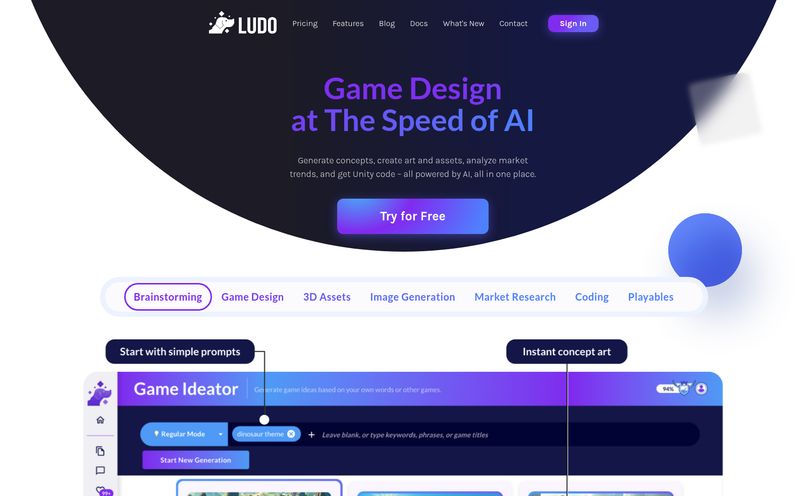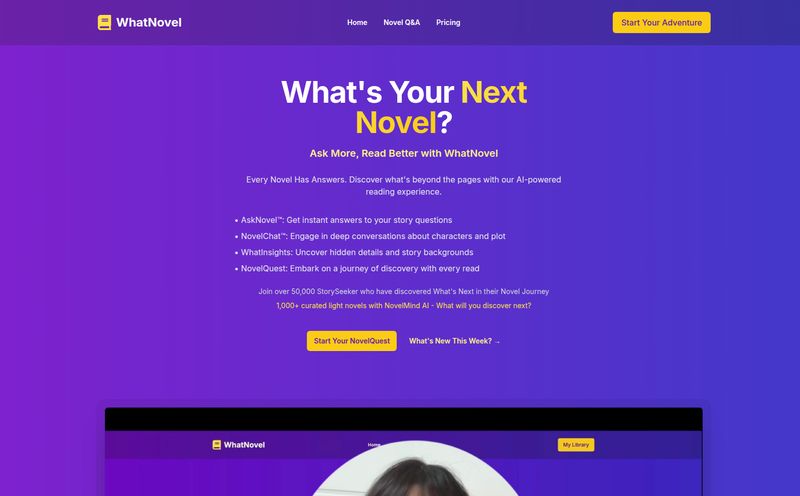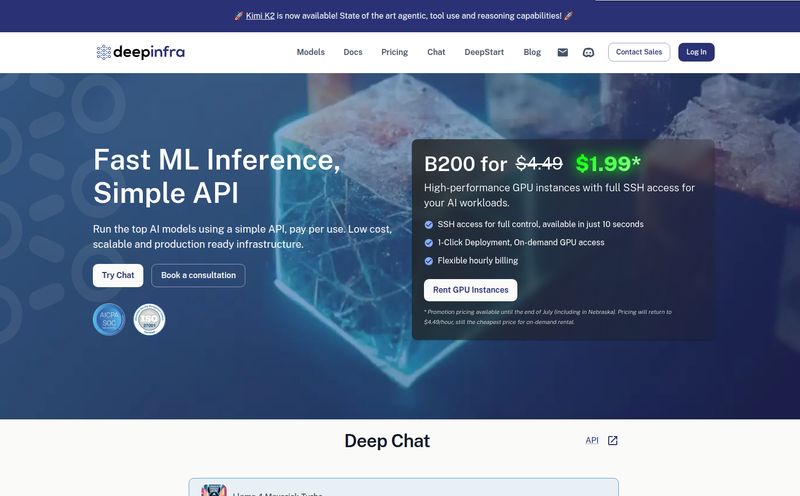If you're a developer, you've been there. It’s your first day on a new project. You're handed access to a GitHub repository that looks like a digital labyrinth, built over years by a dozen different people with a dozen different ideas about what 'clean code' means. The documentation? Oh, it's either non-existent or was last updated when MySpace was still a thing. So you spend the next two weeks on a painful archeological dig, piecing together how everything works, feeling more like a detective than a developer. It's a rite of passage, but man, is it a frustrating one.
For years, we've just accepted this as part of the job. But what if it didn't have to be? I've been hearing whispers about a new class of AI tools aiming to solve this exact problem, and one name that keeps popping up is Adrenaline. The promise is huge: turn hours of slogging through code into seconds of conversation and diagramming. Sounds almost too good to be true, right? Well, I decided to take a look and see if it’s all hype or the real deal.
So, What on Earth is Adrenaline AI?
In a nutshell, Adrenaline is an AI tool designed to be an expert on your codebase. You feed it a GitHub repository—either a public one or your team's private one—or even just a snippet of code, and it becomes your personal, on-demand consultant. Instead of manually tracing function calls or trying to decipher what that one cryptic module does, you just… ask.
Think of it like having a senior engineer with infinite patience who has already memorized the entire codebase, sitting right next to you. It's built to answer any question you have, from the high-level (“What’s the overall architecture of this application?”) to the nitty-gritty (“Why is this API call failing in the staging environment?”).

Visit Adrenaline
How Adrenaline Tries to Change Your Daily Grind
It's not just a simple chatbot layered on top of your code. Based on what I've seen, Adrenaline attacks the problem from a few different angles, which I have to admit, is pretty smart.
Forget Manual Diagrams, Say Hello to Vision
This is the feature that first caught my eye. They call it “Vision,” and its job is to automatically generate system diagrams, flowcharts, and architecture maps. We’ve all spent countless hours in Miro or Lucidchart drawing boxes and arrows, trying to map out a system, only for it to become obsolete the moment someone pushes a new feature. It's a nightmare to maintain.
Adrenaline's proposition is to create living diagrams directly from the code. It can give you a high-level overview or dig into specific modules to create more detailed charts. If this works as advertised, it’s not just a time-saver; it’s a genuine shift in how we visualize and understand software. No more outdated diagrams misleading new hires.
A Visual GPS for Your Repository
Building on the diagram feature, Adrenaline also provides a way to explore your codebase visually. Instead of just a tree of files and folders, you get a bird's-eye view of how different parts of the system connect. It's like switching from a paper map to Google Maps. You can see the whole city, then zoom in on a specific street or even a single building. For quickly getting the lay of the land in a massive, unfamiliar repository, this could be invaluable.
The Codebase Oracle: Just Ask a Question
And of course, there’s the core Q&A functionality. This is where the LLM magic happens. You can throw complex questions at it and, in theory, get back clear, context-aware answers. I’m thinking of questions like:
Walk me through the user authentication flow.
What services are impacted if I change this `User` model?
Explain this chunk of regex like I’m a five year old.
(We've all been there).
This is the modern version of rubber duck debugging, but your duck has a PhD in your specific software project. Pretty cool.
My Honest Take: The Good, The Bad, and The Code-Smelly
Alright, let's get down to brass tacks. No tool is perfect, and while the promises are shiny, there are always trade-offs. Here's my breakdown after kicking the tires.
The Good Stuff (Why I'm Genuinely Excited)
The biggest win here is the potential to reclaim time. The sheer amount of developer-hours sunk into just understanding code is staggering. Adrenaline offers to slash that, freeing up engineers to do what they're actually paid for: building things. It's also a massive leg up for onboarding. Getting a new team member from zero to productive in days instead of weeks? That's a huge competitive advantage.
And I have to talk about legacy code. Every established company has that one terrifying, monolithic service that no one dares touch because the original developers left a decade ago. A tool like Adrenaline could be the key to finally modernizing or refactoring those systems without flying completely blind. That alone is worth its weight in gold.
The Not-So-Good Stuff (Where I'm a Little Skeptical)
First, let's talk about the GIGO principle: Garbage In, Garbage Out. Adrenaline isn't a magician. If your codebase is an undocumented, spaghetti-coded mess with inconsistent naming and zero comments, the AI's answers are going to reflect that. It can only be as smart as the source material you give it. So, it's an amazing assistant, not a miracle worker.
Then there's the free usage. The info I found suggests you get about 5 free questions. That's enough for a quick taste, but it's like getting one free chip at a casino. It’s designed to get you hooked and leaves you wanting more, which can be a bit of a tease if you're just trying to evaluate it properly.
Finally, the elephant in the room: security. Giving a third-party service access to your company’s proprietary source code is a BIG deal. The Adrenaline website has an FAQ addressing security for private repos, which is good, but any CISO or Head of Engineering will (and should) scrutinize this heavily. For many organizations, this will be the biggest hurdle to adoption, regardless of how great the tech is.
Who Is Adrenaline Actually For?
I see a few clear winners here. Fast-moving startups and scale-ups where documentation is an afterthought will love this. It allows them to maintain velocity without accumulating massive technical knowledge debt. Enterprise teams struggling with complex, legacy systems could also find this to be a powerful ally in their modernization efforts.
For individual developers, especially those contributing to open-source projects, it’s a fantastic way to get up to speed on a large, unfamiliar project. The ability to quickly ask questions about a project like LlamaIndex or Mistral's codebase, as shown on their homepage, is a game-changer for community involvement.
Talking Money: What's the Damage?
Here’s the million-dollar question. As of writing this, Adrenaline doesn't have a public pricing page. Typically, in the B2B SaaS world, this means they're running on a custom, enterprise-focused model. You won't find a neat little $20/month plan here. It’s more likely a “Contact us for a demo and a quote” situation, tailored to the size of your engineering team.
While this is standard practice, it can be a barrier for smaller teams or individuals who just want to use it without a sales call. The limited free trial is your best bet to see if it's even worth starting that conversation.
Frequently Asked Questions
I poked around and found some common questions that are likely on your mind.
Can I use Adrenaline with my company's private GitHub repo?
Yes, it's designed to work with both public and private repositories. However, you'll want to review their security and privacy policies very carefully with your team before connecting your proprietary code.
How long does it take to get started?
It seems pretty quick. The main step is authenticating with GitHub and giving Adrenaline access to the repository you want to analyze. From there, it needs some time to index the code, but then you can start asking questions.
What kind of repositories can it handle?
It appears to be language-agnostic and can handle various kinds of repos. The effectiveness will likely depend more on the structure and clarity of the code than the specific programming language used.
Is this only for teams, or can I use it as an individual?
You can definitely use it as an individual, especially for exploring open-source code. However, the business model seems heavily geared towards engineering teams.
Can I point it at a single code file or snippet?
Yes. The platform mentions you can import a repo or paste a code snippet, which is great for quick, isolated questions without indexing an entire project.
Conclusion: Is Adrenaline a Shot in the Arm for Developers?
So, is Adrenaline the magic bullet that will kill documentation forever? Probably not. We'll still need good, human-written context and design docs. But is it a powerful tool that could fundamentally change how we interact with and understand code? Absolutely.
I’m cautiously optimistic. Tools like Adrenaline represent the next wave of developer experience—not replacing developers, but augmenting them. It's about taking the robotic, time-consuming parts of our job and handing them over to an AI, so we can focus on the creative, problem-solving aspects. It won't fix a badly written codebase, but it might just give you the map and flashlight you need to navigate it. And for most of us, that's a pretty fantastic start.



